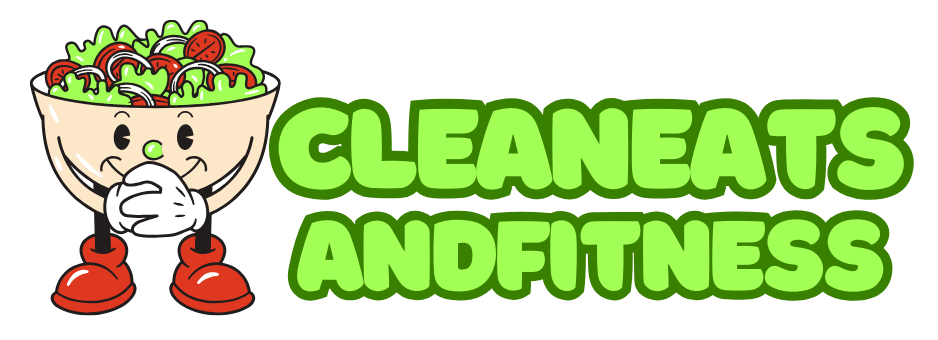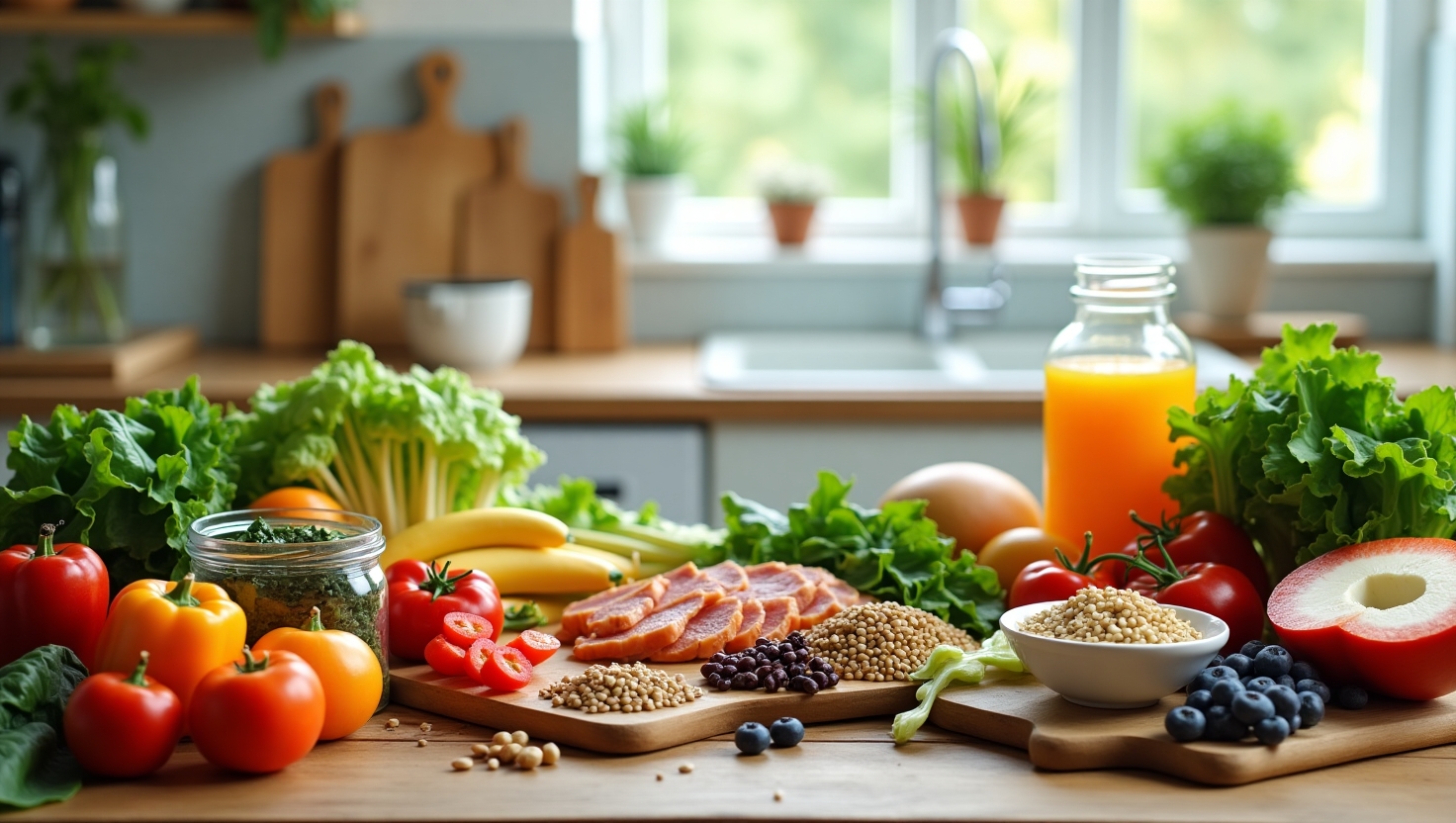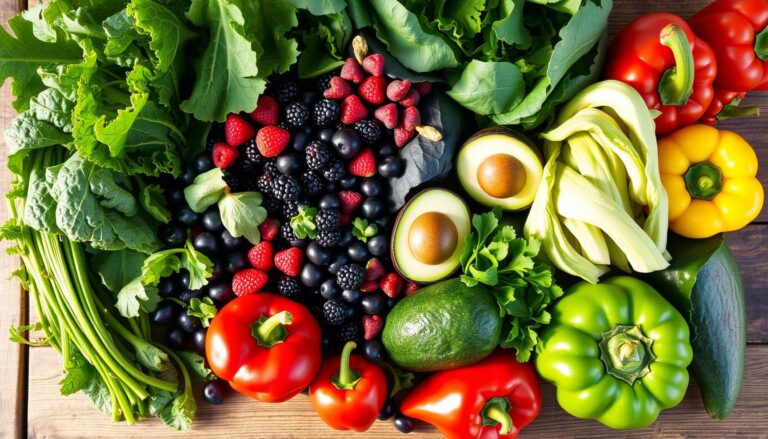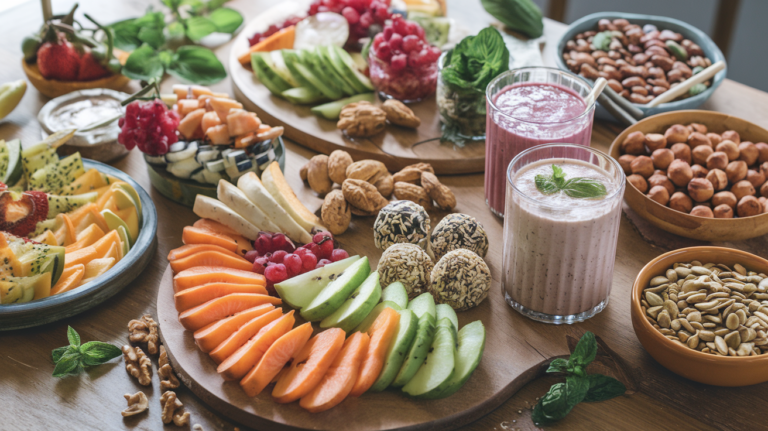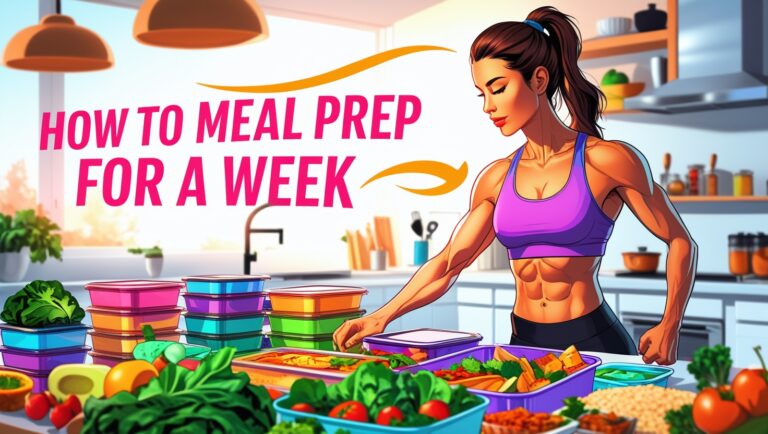Everything You Need to Know to Start Clean Eating
Ever thought about how food choices affect your health and the planet? Clean eating is more than a trend. It’s a lifestyle that focuses on whole, unprocessed foods. This guide will teach you how to start, from the basics to meal plans that fit your life.
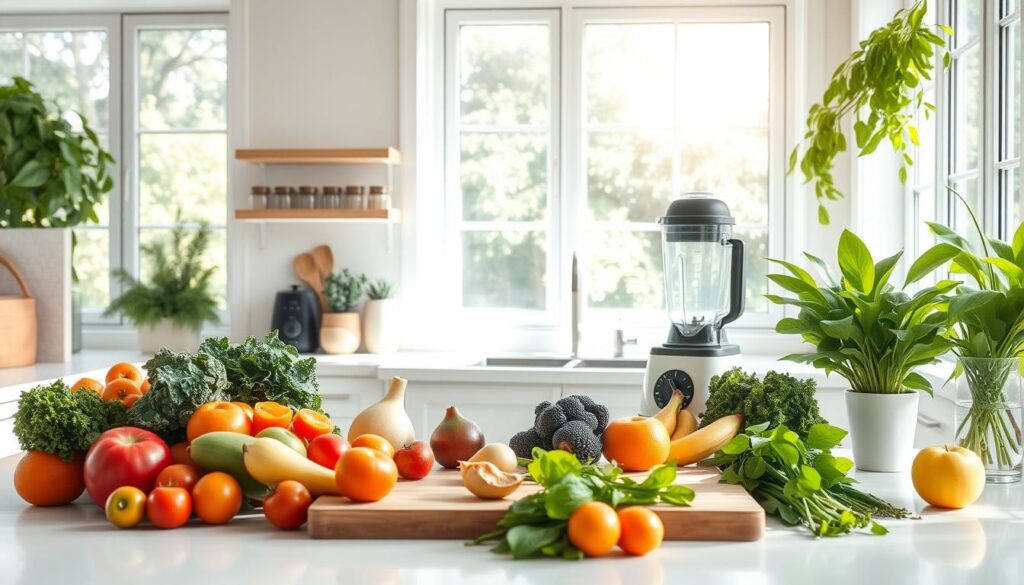
Starting your clean eating journey will show you what clean food is. You’ll see how these choices can improve your life. We’ll share tips, recipes, and strategies to make your transition easy and fun. Get ready for a healthier lifestyle that benefits your body and mind.
Key Takeaways
- Understanding what clean eating means is essential for a successful transition.
- Benefits of clean eating can significantly improve your health and wellness.
- A well-structured meal plan is critical to staying on track.
- Learning to read food labels helps make informed choices.
- Overcoming challenges is possible with the right mindset and tools.
- Staying motivated is key to maintaining a long-term clean eating lifestyle.
What is Clean Eating?
Clean eating means eating whole, unprocessed foods. It means less sugar, bad fats, and preservatives. It’s about eating lots of fruits, veggies, whole grains, lean proteins, and good fats.
This way of eating makes you healthier and happier. It’s all about choosing the best foods for your body.
Learning about clean eating helps you make better food choices. It’s not just about eating right. It’s about staying healthy and avoiding sickness.
It makes you think more about what you eat. It helps you connect with your food in a new way.
Starting to eat clean can change your life. You’ll feel more energetic, happier, and healthier. It’s all about eating the best foods for you.
Benefits of Clean Eating
Starting a clean eating lifestyle has many health benefits. It boosts your energy levels. You get more vitality by eating whole, unprocessed foods.
It also improves your digestion. Foods high in fiber help your gut stay healthy. This leads to better digestion and regular bowel movements.
Managing your weight gets easier too. Eating foods rich in nutrients helps you feel full longer. This makes it simpler to keep a healthy weight.
Studies show clean eating can lower the risk of chronic diseases. This includes obesity and related health issues.
But clean eating does more than just improve your body. It also makes your mind clearer and your emotions more balanced. This creates a healthier lifestyle for your body and mind.
How to Start Clean Eating: A Beginner’s Guide
Starting clean eating can feel hard, but it’s doable. This guide helps you start your clean eating journey.
First, set goals that feel achievable. Changing your diet is a slow process. Start with small steps to avoid getting discouraged.
Learn about the foods you should eat. Focus on whole grains, fresh fruits, lean proteins, and healthy fats. Choosing organic foods is even better.
Then, clean out your pantry. Get rid of processed foods. This makes it easier to stick to clean eating.
Start by adding a few clean meals each week. This helps you get used to the changes.
Meal planning and prep make clean eating easier. Spend time each week planning and preparing. This saves time and keeps you on track.
Follow these tips to start your clean eating journey. Remember, every small step helps you reach your goals.
| Step | Description |
|---|---|
| Set Realistic Goals | Focus on small, sustainable changes. |
| Educate Yourself | Learn about clean ingredients and food choices. |
| Clean Out Your Pantry | Remove processed foods and unhealthy options. |
| Incorporate Whole Foods | Add clean meals gradually into your diet. |
| Meal Prep and Plan | Prepare meals and ingredients in advance for ease. |
Essential Clean Eating Principles
Starting clean eating means knowing some key rules. First, eat whole foods. These foods are not processed much. They give you good nutrients without extra stuff.
Also, eating foods in season and local is important. It’s good for you and helps your community.
Cooking at home is a big part of clean eating. You can pick what goes into your food. This helps you eat healthier and feel closer to your food.
It’s also key to watch how much you eat. Eating the right amount helps you stay healthy. Start with small portions and add more if you need to.
Being mindful of what you eat is also important. Notice how food makes you feel. This helps you choose better foods. Knowing where your food comes from is also good. It makes sure your food matches your health goals and values.
| Clean Eating Principles | Description |
|---|---|
| Whole Foods | Choose minimally processed items that fulfill nutritional needs. |
| Seasonal & Local | Support local farmers and consume ingredients at their peak nutrition. |
| Cooking at Home | Gain control over ingredients and portion sizes by making meals from scratch. |
| Portion Control | Mindfully manage serving sizes to prevent overeating. |
| Mindful Eating | Enhance awareness of food effects on your body and mood. |
| Food Sourcing | Choose foods from trustworthy sources to align with your values. |
Clean Eating – Everything You Need to Know to Get Started
Starting your clean eating journey is exciting. It’s about making healthy choices that feel good. Think of it as a lifestyle, not just a diet. This way, you can enjoy many foods while staying healthy.
To begin with clean eating, remember these important points:
- Whole Foods: Eat foods that are not processed. This includes fruits, veggies, whole grains, lean proteins, and healthy fats.
- Ingredient Awareness: Look at food labels. Choose items with fewer ingredients. Try to avoid additives and preservatives.
- Meal Variety: Try different foods to keep your meals fun and tasty.
- Mindful Eating: Enjoy your meals slowly. Listen to your body and enjoy the tastes.
Make clean eating fit your life and tastes. Try new recipes and flavors. This way, your meals will be both healthy and delicious.
Creating a Clean Eating Meal Plan
Creating a clean eating meal plan is key to meeting your nutritional needs. A good meal plan keeps you organized and ensures you get the right nutrients. Start by thinking about your dietary needs based on your age, how active you are, and your health goals. A plan that fits you will make you feel better.
Understanding Your Nutritional Needs
Your nutritional needs for clean eating can change a lot. Several things affect these needs, like:
- Age: Your needs change as you get older.
- Activity Level: More activity means you need more nutrients.
- Health Goals: Goals like losing weight or gaining muscle change what you eat.
Knowing these things helps make a meal plan that meets your goals and keeps you full of energy all day.
Sample Meal Plans for Clean Eating
Want some ideas? Here are some sample meal plans for breakfast, lunch, and dinner:
| Meal Time | Sample Meal | Key Nutrients |
|---|---|---|
| Breakfast | Oatmeal with fresh berries and almonds | Fiber, antioxidants, healthy fats |
| Lunch | Quinoa salad with mixed vegetables and chickpeas | Protein, vitamins, minerals |
| Dinner | Grilled salmon with steamed broccoli and brown rice | Omega-3, fiber, carbohydrates |
Mixing up your foods in your meal plan is good for balanced nutrition. Eating whole, less processed foods helps you meet your dietary needs and enjoy tasty meals.
Top Clean Eating Tips for Success
Starting a clean eating lifestyle can seem hard. But, with the right steps, it can be fun and lasting. Here are some tips to help you succeed. Keeping a food journal helps you see what you eat and when. It shows you what works and what doesn’t.
Having friends or family support you is key. They help you stay on track and motivated. Trying new recipes makes your diet interesting. You can find lots of clean eating ideas online.
Drinking water is very important. It keeps you healthy and can make you feel less hungry. It’s okay to have treats sometimes. This keeps your clean eating journey fun.
Shopping for Clean Eating: What to Buy
Starting a clean eating journey means knowing what to buy at the store. A clean eating list helps you pick the best foods. Choose foods that make your body strong and healthy.
Focus on whole foods and avoid processed ones. Processed foods often have too much sugar and bad additives.
When you’re at the store, it’s important to read food labels. Look for foods with simple ingredient lists. Avoid foods with long lists of ingredients.
Here are some important categories for clean eating:
Read Labels: What to Look For
- Organic Fruits and Vegetables: Choose fresh, organic produce. It’s better for you because it has less pesticides.
- Whole Grains: Pick grains like quinoa, brown rice, and whole wheat. They give you important nutrients and fiber.
- Lean Proteins: Look for chicken, turkey, fish, or plant-based foods like lentils and chickpeas.
- Healthy Fats: Add avocados, nuts, and olive oil to your diet. They’re good for your heart.
Also, learn about food label terms. Stay away from foods with added sugars, trans fats, and artificial preservatives. This helps you make better choices for a healthier life.
Healthy Clean Eating Recipes to Try
Starting clean eating opens up a world of tasty and healthy meals. Trying out different recipes makes it fun and easy. Here are some simple clean eating recipes for breakfast, lunch, and dinner.
Breakfast Ideas
- Smoothie bowls with fresh fruits, nuts, and seeds
- Overnight oats with almond milk and berries
- Vegetable omelets with spinach, tomatoes, and bell peppers
Lunch Options
- Quinoa salad with chickpeas, cucumbers, and lemon vinaigrette
- Whole grain tortilla wraps with turkey, avocado, and greens
- Brown rice bowls with grilled chicken and steamed broccoli
Dinner Recipes
- Baked salmon with herbs and asparagus
- Vegetable stir-fry with your favorite sauces
- Homemade soups with lentils, carrots, and celery

Overcoming Challenges in Clean Eating
Starting clean eating can bring up challenges. You might face them at social events, when you crave junk food, or when you’re busy. But, you can manage these struggles with smart strategies.
Plan ahead for parties by bringing a healthy dish. This way, you have good food options and can talk about healthy living. Being ready helps you stay focused, even when there’s tempting food around.
Craving unhealthy foods is common. It’s key to find healthy ways to deal with these cravings. Try doing something fun, drinking water, or eating a clean snack. Not giving in to cravings helps you stay strong in your clean eating goals.
Time can be a big problem for clean eating. Make meals easier by cooking in bulk or using quick recipes. This saves time and keeps your meals healthy, helping you stick to clean eating without stress.
Being flexible is important when facing these challenges. Remember, it’s okay to slip up sometimes. But keep going, and you’ll get better. You’re not alone in this journey. Look for support online or in person to share tips and stay motivated.
| Challenges of Clean Eating | Strategies for Overcoming |
|---|---|
| Social Situations | Plan ahead by bringing healthy dishes or snacks. |
| Cravings for Processed Foods | Develop coping mechanisms like distraction and healthy snacking. |
| Time Constraints | Simplify meal prep with batch cooking and quick recipes. |
| Lack of Community Support | Engage with online forums or local health groups for motivation. |
Staying Motivated on Your Clean Eating Journey
Keeping up the motivation for clean eating is key to success. Start with small, easy goals. These can be as simple as eating more fruits and veggies or meal prepping for the week.
Tracking your progress is a big help. Write down what you eat and how you feel. Share your wins with others to stay motivated.
Being part of clean eating groups on social media is great. You can share ideas and get advice from others. This support keeps you going.
Use pictures and quotes to remind you of your goals. Seeing positive messages can boost your mood and keep you on track. Every step counts, not just the end goal.
| Motivation Techniques | Description |
|---|---|
| Set Small Goals | Achieve minor objectives that can lead to bigger successes. |
| Track Progress | Document meals and reflect on how you feel after clean eating. |
| Engage in Communities | Join social media groups to share experiences and gain inspiration. |
| Visual Reminders | Use quotes and images to boost your morale and commitment. |
Maintaining a Clean Eating Lifestyle Long-Term
Starting a long-term clean eating journey needs commitment and flexibility. Create a menu that fits your lifestyle. Try new recipes to keep things fun and exciting.
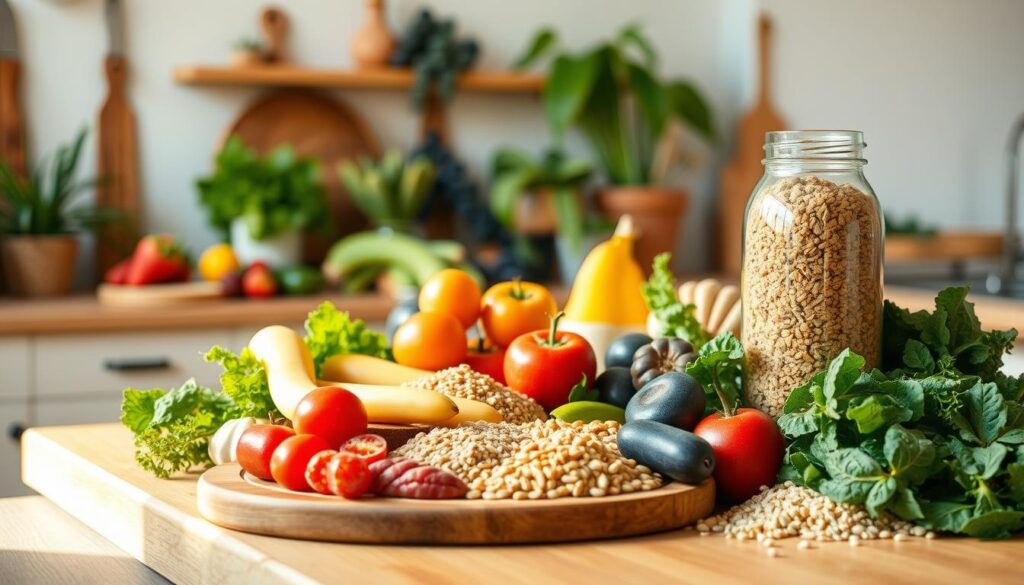
It’s okay to enjoy treats sometimes. This balance helps you enjoy food more. Clean eating is about making healthy choices, not feeling trapped.
Here are some tips to help you stick to clean eating:
- Visit local farmer’s markets for fresh, healthy food.
- Use seasonal foods to make your meals interesting and full of nutrients.
- Add variety with foods like legumes, grains, and fruits.
- Plan your meals ahead to stay on track, even when you’re busy.
Keeping up with clean eating means making small changes over time. Staying true to your clean eating goals shows your growth and health. It’s all about making smart food choices.
Common Misconceptions About Clean Eating
Many people think clean eating means buying only expensive organic foods. But, it’s really about eating whole foods. You can choose both organic and regular foods without spending a lot.
Some think all processed foods are bad. But, not all are. Knowing how to read labels helps you spot bad stuff. This is key to making good choices.
Clean eating isn’t a strict diet. It’s about eating whole foods and enjoying some treats too. This makes it easier for many to live a healthier life.
Learning about clean eating helps you understand how to feed your body well. Start debunking myths and see how small changes can make a big difference in your health.
Conclusion
As you finish your clean eating journey, think about what you’ve learned. Clean eating is not just a trend. It’s a way of life that makes you healthier and more energetic.
By eating whole foods, you feed your body well. You also learn how to make good food choices. This knowledge helps you make healthy decisions.
Remember, clean eating is about knowing what you need and planning your meals. It’s also about finding help when you need it. This way, you can enjoy food and stay healthy.
Every step you take towards clean eating makes you healthier. Keep going, stay motivated, and enjoy the process. Your dedication to clean eating is a gift to your future. It will bring you many benefits, not just in your diet.
FAQ
What is clean eating?
Clean eating means eating whole foods and avoiding bad stuff. This helps you feel better and live healthier.
How can I start clean eating?
Start by setting goals and learning about good foods. Add more whole foods to your diet slowly. Clean out your pantry and prep meals to help.
What are the benefits of clean eating?
Clean eating boosts energy and digestion. It helps with weight and lowers disease risk. It also makes you feel good mentally and emotionally.
Can clean eating fit into a busy lifestyle?
Yes, it can. Plan meals, cook in batches, and make simple recipes. Keep healthy snacks ready and use quick meals to stay on track.
Are there any clean eating recipes for beginners?
Yes! Try smoothie bowls, stir-fries, and quinoa salads. You can make healthy meals fun and different.
What should I look for when shopping for clean eating foods?
Look for organic fruits and veggies, whole grains, lean meats, and healthy fats. Always check labels for added sugars and preservatives.
How can I overcome challenges in clean eating?
Plan for social events and have healthy snacks ready. Simplify meal prep to save time. Stay committed and adapt to new situations.
Is clean eating expensive?
No, it doesn’t have to be. Find cheap fresh foods, grains, and proteins. Shop seasonal and in bulk to save money.
What are some essential tips for maintaining a clean eating lifestyle?
Keep a food journal, try new recipes, and drink plenty of water. Be flexible and join clean eating groups for support.
